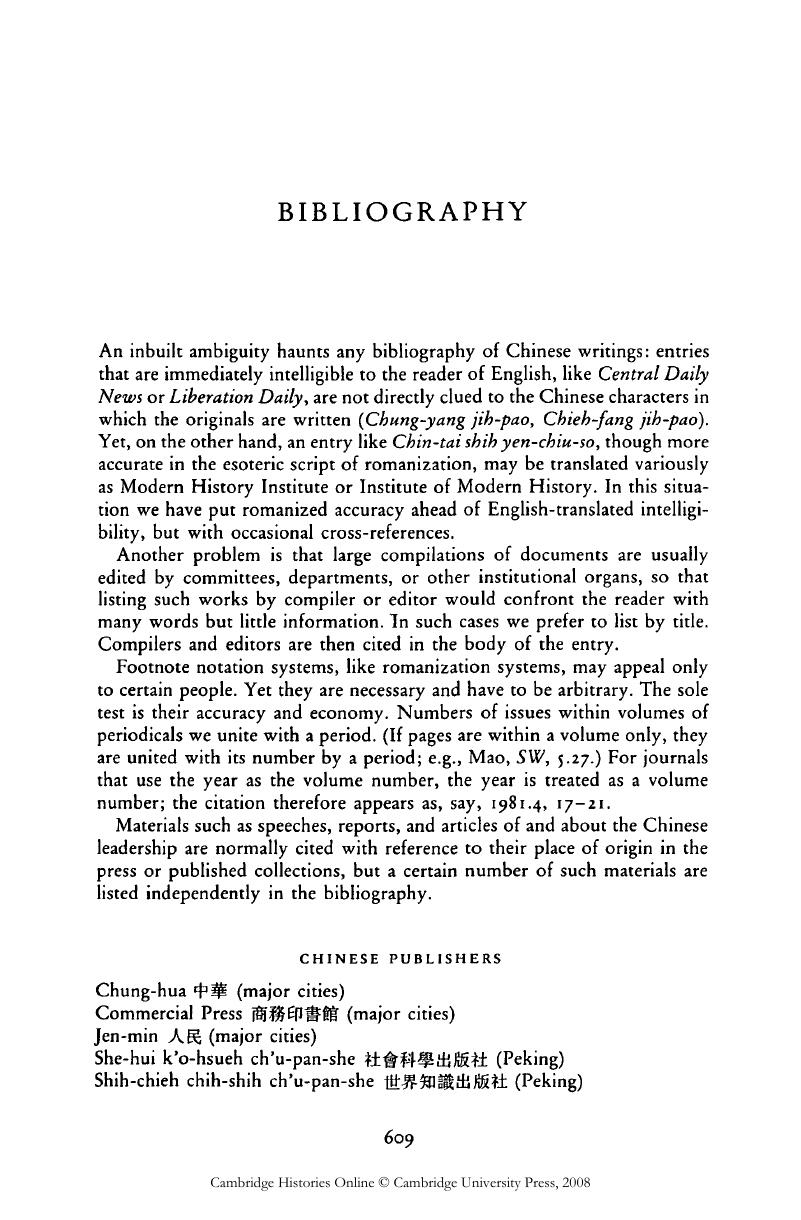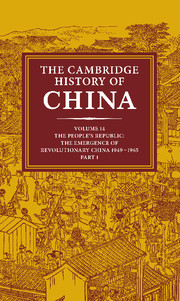Book contents
- Frontmatter
- 1 The reunification of China
- PART 1 EMULATING THE SOVIET MODEL, 1949–1957
- PART II THE SEARCH FOR A CHINESE ROAD, 1958–1965
- Bibliographical Essays
- Bibliographical essays for chapters
- Bibliography
- Appendixes: Meetings and Leaders
- Conversion Tables: pinyin and Wade-Giles
- Glossary Index
- Map 1. China’s physical features
- Map 2. PRC: political (Wade–Giles romanization)
- Map 3. PRC: political (pinyin romanization)
- References
Bibliography
Published online by Cambridge University Press: 28 March 2008
- Frontmatter
- 1 The reunification of China
- PART 1 EMULATING THE SOVIET MODEL, 1949–1957
- PART II THE SEARCH FOR A CHINESE ROAD, 1958–1965
- Bibliographical Essays
- Bibliographical essays for chapters
- Bibliography
- Appendixes: Meetings and Leaders
- Conversion Tables: pinyin and Wade-Giles
- Glossary Index
- Map 1. China’s physical features
- Map 2. PRC: political (Wade–Giles romanization)
- Map 3. PRC: political (pinyin romanization)
- References
Summary

- Type
- Chapter
- Information
- The Cambridge History of China , pp. 609 - 659Publisher: Cambridge University PressPrint publication year: 1987

